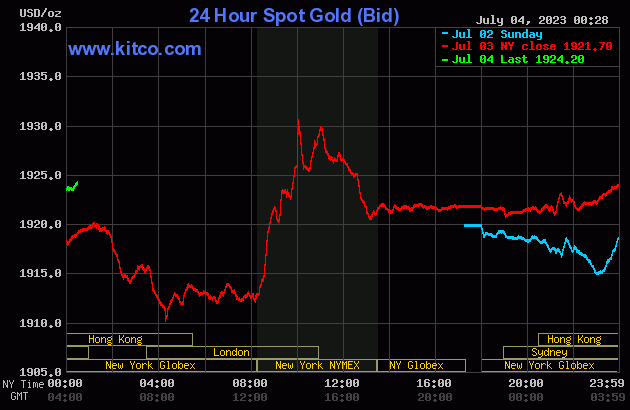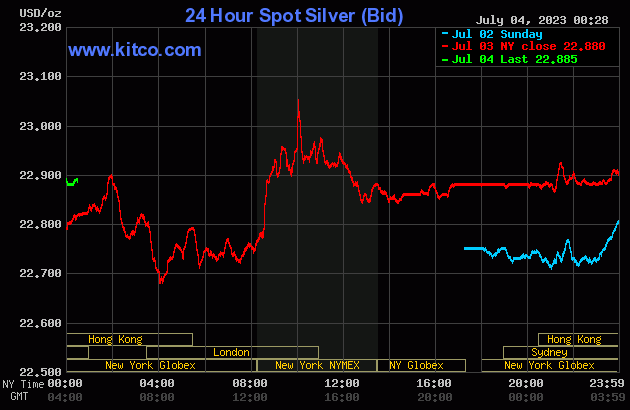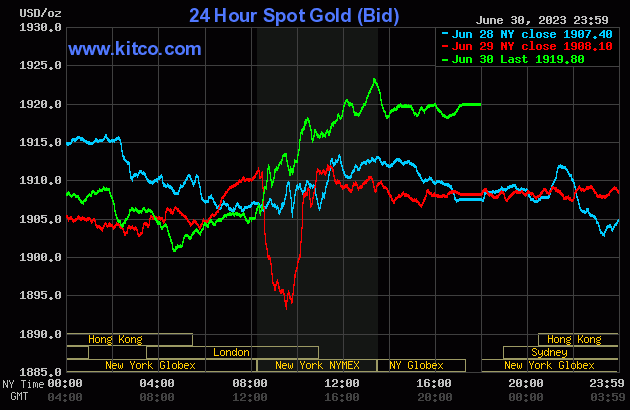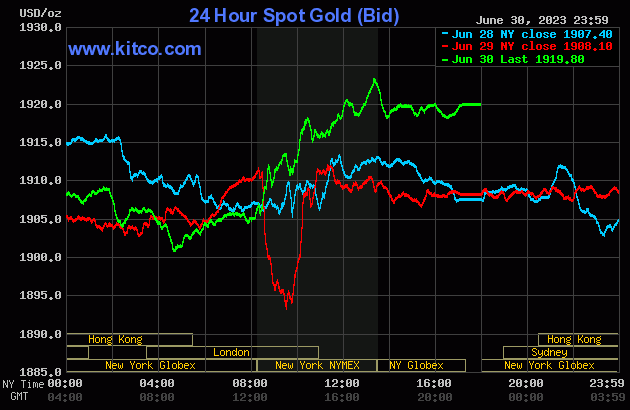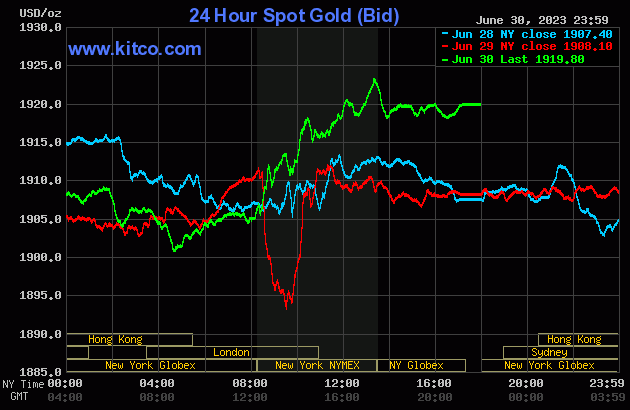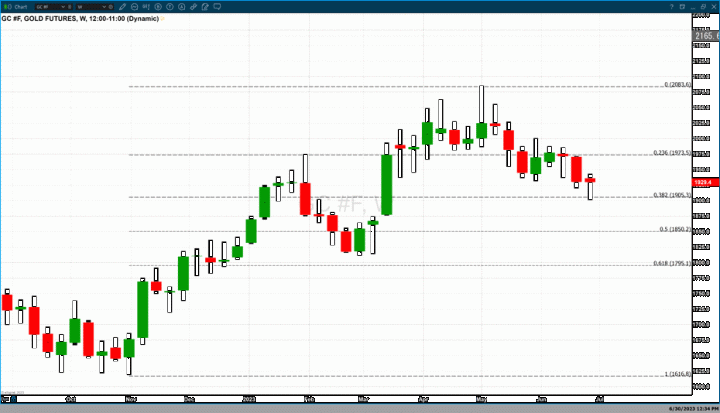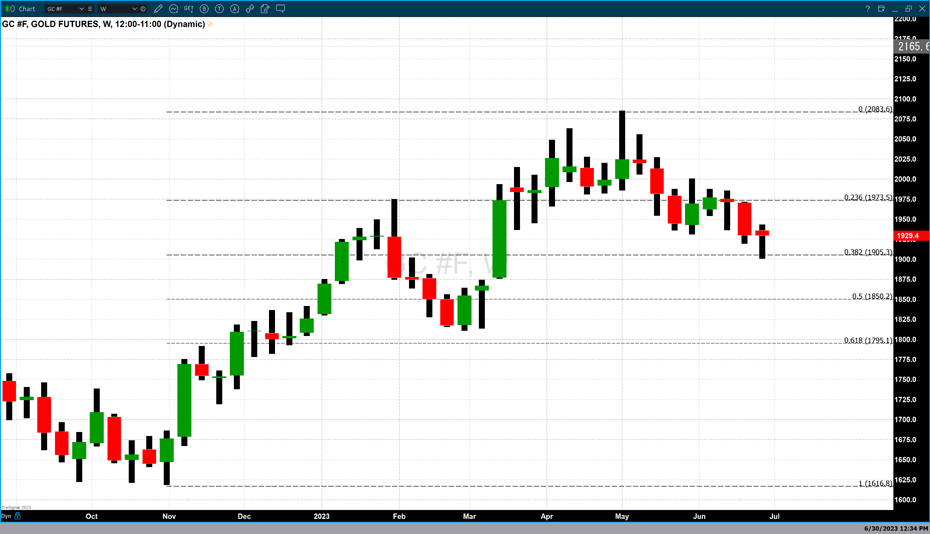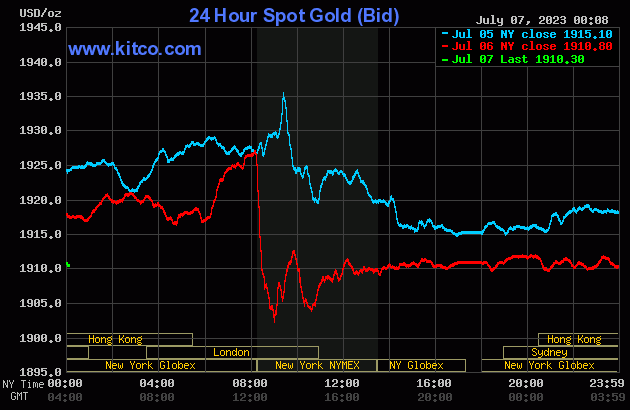
Stronger U.S. jobs data pressure gold, silver
Gold and silver prices are lower in midday U.S. trading Thursday, following a much stronger-than-expected U.S. ADP employment report this morning that showed a gain in jobs that was double market expectations. The report pushed the U.S. dollar index well off its overnight low and also pushed U.S. Treasury yields higher. August gold was last down $10.50 at $1,916.70 and September silver was down $0.497 at $22.905.
The June U.S. ADP report showed a rise of 497,000 jobs, compared to market expectations for a gain of 220,000. That data falls into the camp of the U.S. monetary policy hawks, who want to see the Federal Reserve continue to raise interest rates. Now comes the U.S. employment situation report from the Labor Department Friday morning. The key non-farm payrolls number was forecast up 240,000 versus a gain of 339,000 in the May report. However, today''s strong ADP jobs number has many thinking Friday''s Labor Department jobs report will also be stronger.
The latest FOMC minutes from the Federal Reserve were released Wednesday afternoon and they also leaned hawkish. The minutes from the June 13-14 meeting showed that while almost all Fed officials deemed it "appropriate and acceptable" to keep the key Fed funds rate unchanged at a 5.0-5.25% range, some would have supported a 0.25% increase, according to a Bloomberg report. The minutes also said "almost all" FOMC members agreed that further tightening of U.S. monetary policy will be needed this year. The gold and silver markets did not react strongly to the minutes.
All of the above have likely now moved the needle over to high odds that the Federal Reserve will raise interest rates at its July FOMC meeting, after pausing at the June meeting.
.gif) Looking past Turkey's gold sales, central banks continued to buy gold in May
Looking past Turkey's gold sales, central banks continued to buy gold in May
Asian and European stock markets were mostly lower in overnight trading. U.S. stock indexes are solidly lower at midday.
The key outside markets today see the U.S. dollar index modestly lower but up from overnight lows. Nymex crude oil prices are slightly down and trading around $71.25 a barrel. The benchmark 10-year U.S. Treasury note yield is rising and presently fetching 4.067% and at the highest level since March.

Technically, August gold futures bears have the overall near-term technical advantage. Prices are in a two-month-old downtrend on the daily bar chart. Bulls'' next upside price objective is to produce a close above solid resistance at $1,950.00. Bears' next near-term downside price objective is pushing futures prices below solid technical support at the February low of $1,846.80. First resistance is seen at today''s high of $1,934.00 and then at this week''s high of $1,942.90. First support is seen at today''s low of $1,908.50 and then at $1,900.00. Wyckoff's Market Rating: 3.5
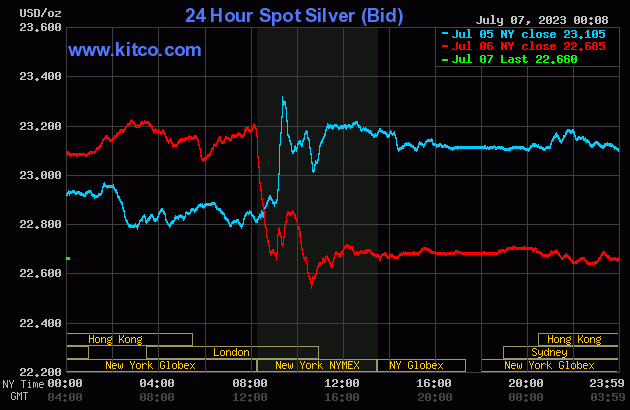
September silver futures bears have the overall near-term technical advantage. A choppy, two-month-old price downtrend is in place on the daily bar chart. Silver bulls' next upside price objective is closing prices above solid technical resistance at $24.00. The next downside price objective for the bears is closing prices below solid support at the March low of $20.425. First resistance is seen at $23.25 and then at this week''s high of $23.535. Next support is seen at today''s low of $22.72 and then at last week''s low of $22.485. Wyckoff's Market Rating: 3.5.
September N.Y. copper closed down 305 points at 373.80 cents today. Prices closed nearer the session low. The copper bears have the overall near-term technical advantage. Copper bulls' next upside price objective is pushing and closing prices above solid technical resistance at the June high of 396.40 cents. The next downside price objective for the bears is closing prices below solid technical support at the May low of 356.50 cents. First resistance is seen at today''s high of 377.60 cents and then at this week''s high of 380.95 cents. First support is seen at today''s low of 372.25 cents and then at last week''s low of 368.30 cents. Wyckoff's Market Rating: 3.0.
By
Jim Wyckoff
For Kitco News
David
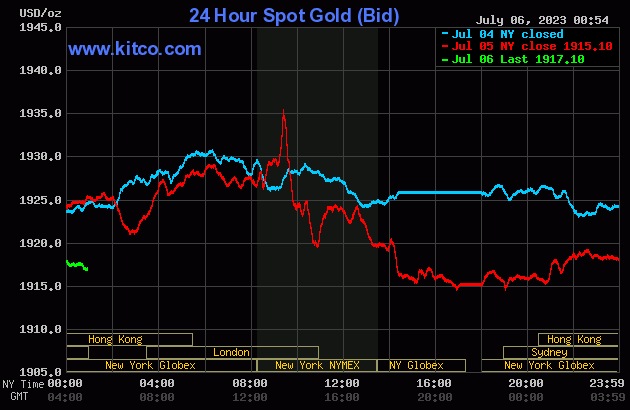
.gif) Spot gold and silver prices hold gains, testing resistance in quiet holiday trading
Spot gold and silver prices hold gains, testing resistance in quiet holiday trading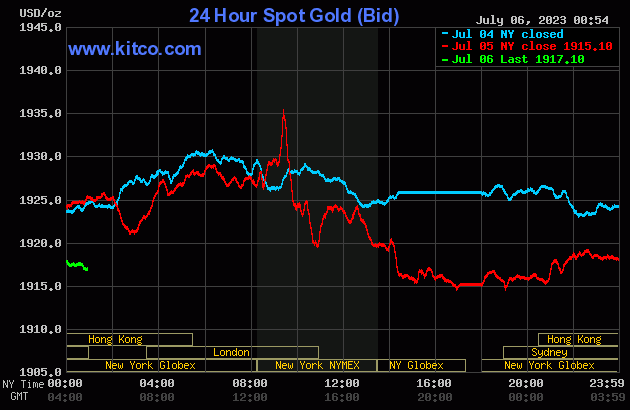
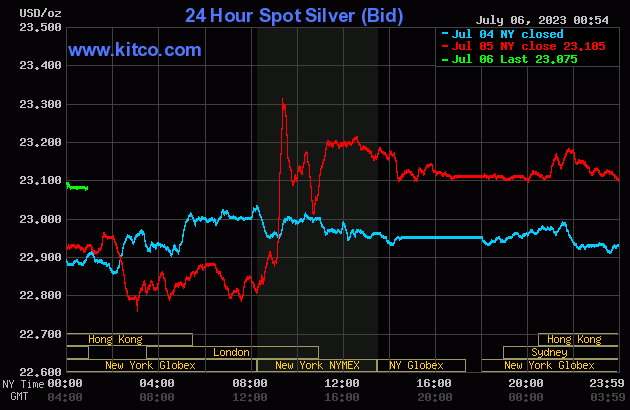

 Spot gold and silver prices hold gains, testing resistance in quiet holiday trading
Spot gold and silver prices hold gains, testing resistance in quiet holiday trading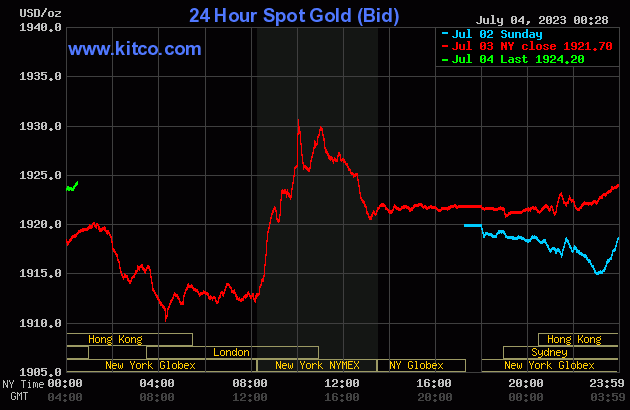
.jpg) Here's why gold price is above $1,900 despite two looming rate hikes
Here's why gold price is above $1,900 despite two looming rate hikes